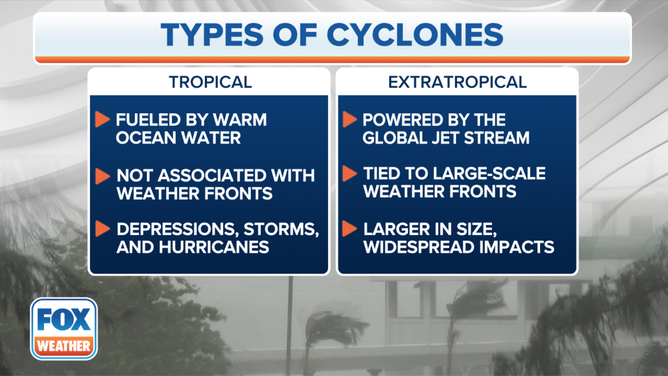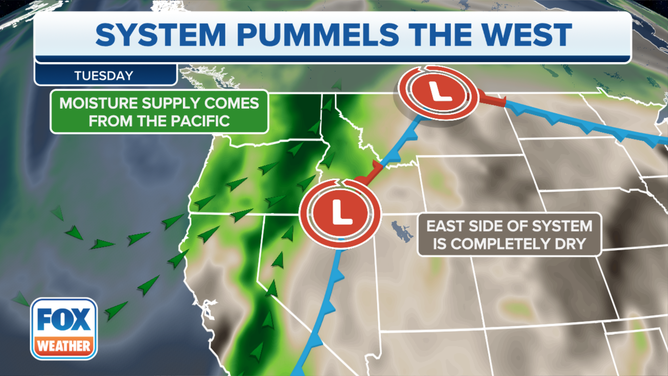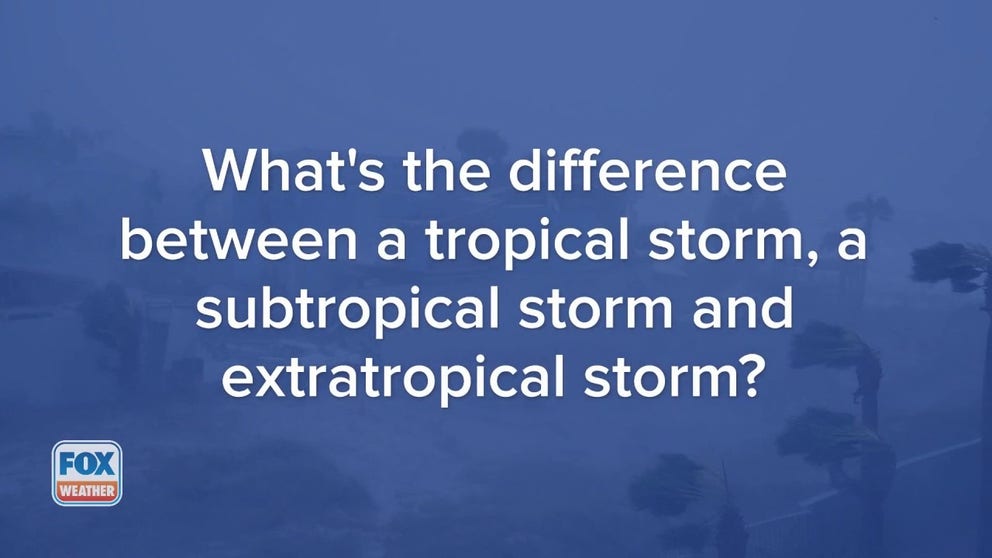What's the difference between a tropical storm and a subtropical storm?
Meteorologists use words like tropical, subtropical and extratropical all the time during hurricane season. Here is what they mean.
What's the difference between a tropical storm and a subtropical storm?
Find out the differences between tropical, extratropical and subtropical storms.
Hurricane season can bring out a seemingly endless alphabet soup of terms that meteorologists use to describe everything from storms to the damage they can cause.
There are actually a few different varieties of low-pressure systems that can cause trouble in the tropics, from traditional tropical storms to subtropical storms to extratropical storms.
What makes them tick? Here's a closer look at these storms.
What is a tropical storm?
In order for a low-pressure system to become a tropical one, it has to develop a warm core. That means its main source of energy comes from the latent heat of condensation. This is when warm, moist air over the warm ocean rises, water vapor condenses into droplets and heat is released. As the newly warmed air continues to rise (think a hot air balloon), it pulls in more humid air from the surface of the water.
7 FACTS TO KNOW ABOUT HURRICANES
Hurricane categories explained: How dangerous is a storm?
Amy Freeze and Jason Frazer explain the anatomy, categories, and dangers of hurricanes—as well as how to prepare when one is heading your way.
This is why meteorologists look at sea surface temperatures. Generally, the sea needs to be near 80 degrees or above, and that warm water needs to be about 150 feet deep.
HERE’S WHY THE ATLANTIC HURRICANE SEASON RUNS FROM JUNE TO NOVEMBER
Once the storm system becomes better organized and has maximum sustained winds of between 39 and 73 mph, it is designated a tropical storm. It is then given a name off one of six rotating lists.
The wind field of tropical storms is usually more compact than an extratropical cyclone.
What is a subtropical storm?
As a tropical storm moves into cooler water, it will begin to transition to a cold-core system. It's during this transition that a tropical storm can become subtropical.
HERE ARE THE BUZZWORDS YOU'LL HEAR DURING HURRICANE SEASON

A subtropical system's strongest winds are away from the center and is asymmetrical with cold, dry air intruding into the northwest.
(NOAA/NASA/NRL)
A subtropical storm has characteristics of both tropical and extratropical cyclones. Most of its energy is derived from the clash of warm and cold air, but the cyclone does not have fronts and is cold-core in the upper levels of the atmosphere.
Like tropical systems, a subtropical storm has a well-defined center and a closed circulation. However, the area of maximum winds within the circulation is farther away from the center and there is less symmetry, according to the National Weather Service.
WHAT’S THE DIFFERENCE BETWEEN A TROPICAL DEPRESSION, TROPICAL STORM AND HURRICANE?

Hurricane Fiona in 2022 serves as an example of a storm with a well-defined center and a closed circulation.
(NOAA)
These storms generally produce less rain than a typical tropical system.
A subtropical cyclone can get stronger, but it must transition to a warm-core cyclone before it can be called a tropical storm or a hurricane.

(FOX Weather)
What is an extratropical cyclone?
An extratropical cyclone is the type of low-pressure system that most of us are used to seeing on a weather map with fronts attached to it.

This is how we are used to seeing extratropical cyclones.
(FOX Weather)
This type of storm is a cold-core low, meaning its primary energy source is the contrast of cold and warm air. This happens because warm air is less dense than cold air. As cold air, behind the front, pushes into the warm air, the warm air is forced up and out of the way. This lift often creates clouds and precipitation.
According to the NWS, these types of systems can be massive, with a diameter of 1,250 miles, and a cold front that extends for hundreds of miles toward the equator.
What is a remnant low?
If a tropical system weakens and loses its tropical characteristics, it becomes post-tropical. It will lose its organized thunderstorm activity. Once the maximum sustained winds in the system drop to 21 mph, it is called a remnant low.
FOX Weather created a buzzword list with definitions of meteorological terms you could hear during hurricane season. You can find it here.

